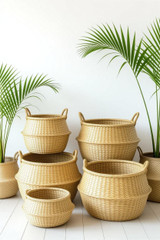About Buddha , Buddhawas born in 563 B.C. in Nepal.
About Buddha
Buddhawas born in 563 B.C. in Nepal. The Buddha was the son of the King of the Sakyas. Suddhodana, who ruled at Kapilavastu, on the border of Nepal. His mother was Queen Maya. He was named Siddartha. He lived amidst the pleasures of palace life and at age 16 he was married to Princess Yasodhara. They had a son named Rahula. After seeing a decrepit old man, an invalid, and an ascetic beggar, he learned of suffering and decided to embrace asceticism. Soon afterwards, at age 29, Siddhartha left the palace and his family and went to a hermitage where he became monk Guatama, or, as he is still called, Sakyamuni (The ascetic of the Sakyas). One day, meditating under a sacred fig tee, he attained perfect illumination (Bodhi). He had become a Buddha. From there on he traveled and preached for 44 years what was to become one of the main religions of the world. He died at Kusinagara at age 80. Here Buddha represented in the dispelling fear – blessing pose with the palm of his right hand facing out to give blessing or dispel fear. That hand position is known as abhaya mudra. He usually faces the north. His is also known as Amoghasidhi, one of the five Celestial Buddhas.
Buddha Statues: Meaning of Postures and Poses
Reclining Buddha
The reclining Buddha features the Buddha lying on his right side with his head supported by a pillow or his propped up hand and elbow. Though this representation of the Buddha can indicate sleeping or resting, it is most commonly a representation of the final moments at the end of the buddha's life
Sitting Buddha
The sitting Buddha is the most common representation of the Buddha. These Buddha statues can represent teaching, meditation, or an attempt to reach enlightenment. Hand gestures, or mudras are essential in determining what a sitting Buddha means. For example, the bhumisparsha mudra, or the position in which the Buddha rests his left hand palm up on his lap and his right hand palm down, fingers toward the earth indicates that the statue is calling the earth to witness.
There are three different positions of the sitting Buddha: virasana, vajrasana, and pralambanasana. Virasana, also known as hero’s pose or half lotus, depicts the legs crossed over each other and the sole of one foot is turned upward. Vajrasana, also called the adamant posture, lotus, or diamond, depicts the legs folded over each other with both soles of the feet turned upward. Pralambanasana, also called the European Sitting Pose, depicts the Buddha seated upright in a chair.
Standing Buddha
The standing Buddha is indicative of being stationary, with both feet planted firmly side-by-side. During this position, the Buddha has stopped, and the reason for this halt can be determined by the mudra of the hands.
Most often, the standing Buddha is repelling conflict or rising from meditation to teach the four noble truths after reaching nirvana.
Notably, the feet of the Buddha are planted firmly on the ground, indicating the Buddha is ready to begin traveling and teaching. By contrast, when the soles of the feet are facing upward, as in vajrasana, the Buddha is in the receiving position, during meditation.
walking Buddha
The walking Buddha is the least common of the Buddha postures, seen almost exclusively in Thailand . It features the Buddha standing, with one foot placed in front of the other with the robe shifted to one side, as if in motion. This position indicates inner peace and grace. The Buddha is often considered to be either beginning his journey to teach or returning from heaven after delivering a sermon.
Though most often the walking Buddha is said to have already reached nirvana, there are some depictions of the walking Buddha wearing shoes. These shoes mean that, though the journey toward enlightenment has begun, the shoes are preventing him from connecting with the earth. He needs to remove his earthly desires before he is able to reach enlightenment.
laughing Buddha
Laughing Buddha statues depict a stout, smiling or laughing bald man in robes with a largely exposed pot belly stomach, which symbolizes happiness, good luck, and plenitude.
Some sculpture has small children at his feet. Another item that is usually seen with the Laughing Buddha figure is a begging bowl to represent his Buddhist nature.
In some scenes the Laughing Buddha may be found sitting on a cart drawn by boys, or wielding a fan called an oogi (said to be a "wish giving" fan -- in the distant past, this type of fan was used by the aristocracy to indicate to vassals that their requests would be granted). All of these images display Hotei as a wandering monk who goes around and takes the sadness from people of this world.
According to legend, if one rubs the Laughing Buddha's great belly, it brings forth wealth, good luck, and prosperity. Hotei is also referred to as the patron saint of restaurateurs, fortunetellers and bartenders. When one overeats or over drinks, friends jokingly attribute it to the Laughing Buddha's influence.
Recent Posts
-
Order the Best Boss Day Gifts for Male & Female Bosses in the UAE from Craftihouse.com
Every year, Boss’s Day is the perfect opportunity to show appreciation for the people who lead, ment …13th Oct 2025 -
How This Gift Came to Life: The Story Behind Our Palm Leaf Baskets
How This Gift Came to Life: The Story Behind Our Palm Leaf Baskets In a world where everything is be …8th Oct 2025 -
Handmade Leather Key Chains – Timeless Souvenirs & Everyday Companions
Handmade Leather Key Chains – Timeless Souvenirs & Everyday Companions Introduction In a world where …25th Sep 2025



